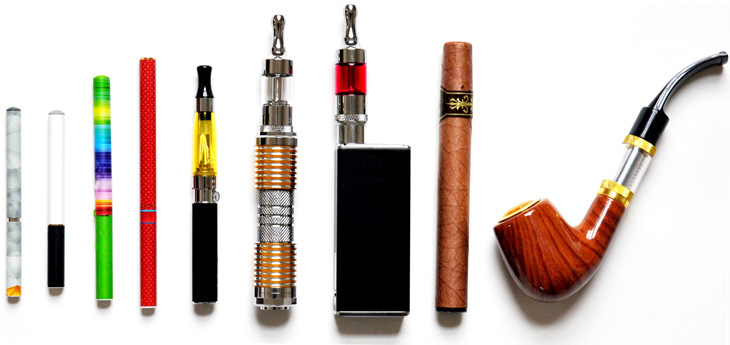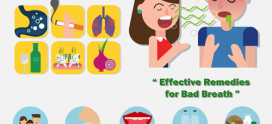To Vape Or Not To Vape
“There is so much pleasure around smoking in terms of when you can do it, the treat element, the flavor, the sensation, the inhale & the exhale” – Lorien Jollye – ex-smoker of 23 years & vaper since 2012
Smoking is a pleasurable activity for many. Much of this pleasure comes from nicotine, the most important psychoactive ingredient in tobacco smoke, which has effects similar to those of caffeine: it increases alertness & stimulates the brain’s main reward system. But nicotine is not the only reason people smoke. The act of smoking itself provides oral gratification, sensory pleasure & social camaraderie
Long-term smokers are more likely to suffer from various lung disorders, cancers & cardiovascular diseases. Such concerns are hardly new. Tobacco use is the single largest preventable cause of disease & death in the US. Since 2009, FDA has regulated cigarettes, smokeless & roll-your-own tobacco. In 2016, FDA finalized a rule extending the regulatory authority to cover all tobacco products & all electronic nicotine delivery systems (ENDS). It now regulates the manufacture, import, packaging, labeling, advertising, promotion & distribution of ENDS. However, products marketed for therapeutic purposes (to help people quit smoking) are regulated by FDA through the Center for Drug Evaluation and Research (CDER)
Vaporizers, vape pens, hookah pens, electronic cigarettes (e-cigs) & e-pipes & other ENDS are battery operated smoking devices that create an aerosol by heating a mix of liquid nicotine, propylene glycol, water, glycerine & flavor, which when inhaled gives a feel of smoking a real cigarette.
Smoking an Ecig is called Vaping. Since the invention of the 1st cigalike by Hon Lik in China in 2003, as a healthy alternative to tobacco, according to WHO, this industry has grown into a global business estimated at $3 billion with 500 brands and 8000 flavors. The cost of an Ecig range between Rs 500-5000.
In 2015 ~ 3 million middle & high school students used Ecigs making it the most common tobacco product used among youth for the 2nd consecutive year. In 2013-14, 81% of youth Ecig users cited availability of appealing flavors as the main reason for use. In 2014, 12.6% of US adults had tried an Ecig & ~ 3.7% used Ecigs daily.
There has been much discussion over the benefits of vaping over conventional smoking methods. A landmark study was conducted, to estimate the long-term effects of Ecigs in real world users & it was concluded that Ecigs & NRT (while continue to provide nicotine) can reduce harm to smokers by reducing exposure to toxic chemicals that lead to cancer in cigarette smokers. This also seems to support Public Health England’s 2015 report that Ecigs are 95% less harmful than tobacco. They are designed for users to inhale nicotine without most of the harmful effects of smoking. However, there has been debate about exactly how safe their long-term use is. The FDA recognizes that some tobacco products are less harmful than others but more evidence is needed.
A subculture has emerged which calls itself the vaping community. A 2014 Postgraduate Medical Journal editorial stated that Ecig companies have a substantial online existence (ecigreviews.com, ukvaper.com, blogs, groups etc). They view Ecigs as a safer alternative to smoking & even as a hobby. They tend to use highly customized devices. A 2014 review stated that tobacco & Ecig cos use social media to get consumers involved in opposing bills that include Ecigs in smoke-free laws.
It is no exaggeration to describe this process as a revolution from the bottom-up: It was driven by consumers from the beginning (Hon Lik was motivated to develop the 1st cigalike because his father died from lung cancer he & himself smoked & wanted to develop a safer way to consume nicotine) & it continues to be driven by consumers.
Several studies indicate that Ecig vapor is harmful for children, teenagers & fetuses. A global 2016 Elsevier Ecig study found 3 deaths associated with nicotine poisoning & stated that it may help people quit but encourage more people to start smoking as it is marketed as a product with no harmful effects. The minimum lethal dose of nicotine is 30-60mg. A Ecig vial contains ~ 10mg nicotine.
The FDA believes that vaping has both potential benefits and risks. If Ecigs, have reduced toxicity compared to conventional cigarettes then current smokers should be encouraged to switch completely. But if any product prompts young people to become addicted to nicotine, reduces a person’s interest in quitting cigarettes, and/or leads to long-term usage with other tobacco products, the public health impact could be negative.
The FDA encourages manufacturers to explore product innovations that would maximize potential benefits and minimize risks.
The scenario in India is a bit different. Here, Ecig sales are not regulated, making vapes easily accessible to adolescents. Though there had been talks to stop illegal import of ENDS in the past, it was not until 2015 some action was taken & Maharashtra FDA approached the Drug Controller General of India to regulate Ecig business. Later Union Health Ministry finally formed a working group to study Ecig effects. Punjab was the 1st to act & declared Ecigs illegal as liquid nicotine is an unregistered drug in India. It issued public notices advertising harmful effects of Ecigs & punishment if found selling them. Ecig sales are rising in India illegally, online under words like no Tobacco & no Tar. It is difficult to track age of buyers, unlike Europe where sales to children under 18 are banned.
At present, there is little public information about scale of vaping in India. It largely depends upon the rate of switching. Based on data collected it appears that ~ 18% of smokers will switch to vaping within a few years. If this happens, then ~ 11 million people would benefit (reduction in tobacco-related deaths) & if majority is below 40 years, the average increase in life expectancy would be ~ 8 years i.e. saving 90 million life-years – increasing productivity consumption – reduction in healthcare expenditures.
While vaping is widely acknowledged to be safer than smoking, concerns have been raised as to whether it may lead to an increase in youth initiation of smoking. While a few studies suggest that some youths who experiment with vaping seem to be more likely to experiment with smoking, this is likely largely because such youths have a higher propensity to engage in novelty-seeking and/or risky behavior. Vaping is seen as different & less risky than smoking. In places where vaping has become widespread, fewer youths are smoking & those who are, are smoking less. Thus, vaping is displacing smoking. From a health perspective, the picture that emerges is a positive one – Vaping with e-liquid is ~ 95% safer than smoking. Those smokers who take up vaping but smoke too, tend to cut down their cigarette consumption. Availability of vape products appears to reduce smoking initiation among young people. Based on present evidence, vaping may result in saving of a billion or more life years.
*facts from authentic sources
Photo Credit: Vape.net
By Dr. Rimjhim Bhatnagar
BDS, MDS
Specialist at Dantah
Twitter: @DentistRimjhim
Email: rimjhim@dantah.com



